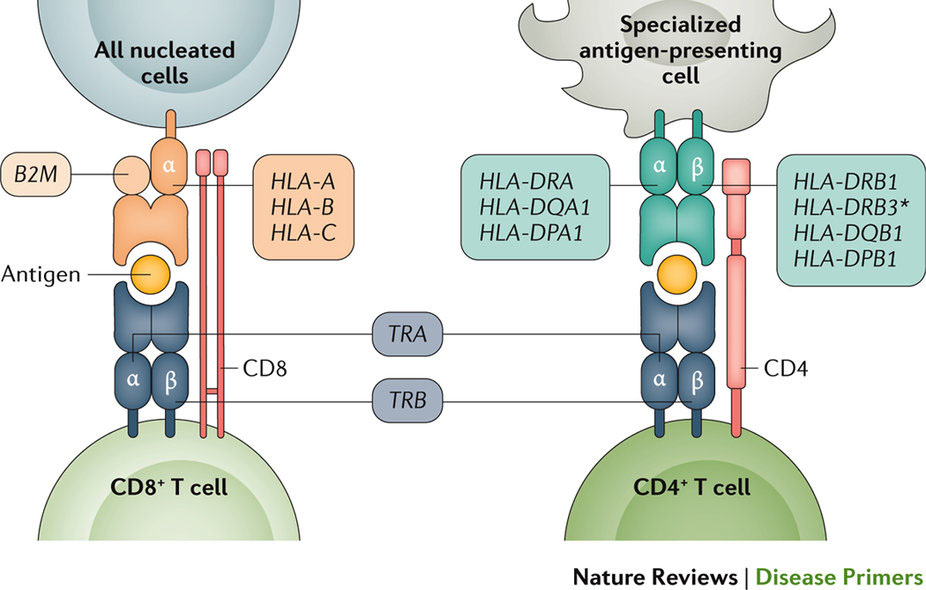ナルコレプシー
Narcolepsy
2017年2月9日 Nature Reviews Disease Primers Article number: 16100 (2017) doi: 10.1038/nrdp.2016.100

ナルコレプシーは、思春期に発症することが多い慢性睡眠障害であり、日中の過度な眠気を特徴とするため、患者に重大な影響を及ぼすことがある。ナルコレプシー患者は、本疾患による社会的烙印、教育と就労の機会を得ることの困難さ、QOLの低下、社会経済的影響などの問題に直面している。ナルコレプシーには、1型と2型の2つのサブタイプが存在し、カタプレキシーがナルコレプシー1型の患者にのみ見られることを除いて、両者の臨床プロファイルはほぼ同じである。ナルコレプシー1型の病因は、視床下部のヒポクレチン産生ニューロンの自己免疫破壊であると推測されている。この仮説は、本疾患に関連する免疫関連の遺伝的要因と環境的要因によって発症するという考え方に基づいている。しかし今のところ、自己免疫仮説を支持する直接の証拠は見当たらない。ナルコレプシーの診断は、臨床的、電気生理学的および生物学的評価を包含して行われるため、より簡単で迅速な方法が必要とされている。ナルコレプシーの対症療法にはいくつかの薬物療法があり、これらの治療法はいずれも有効性と安全性の面で優れている。しかし、現在までに、疾患の進行を妨げたり遅らせたりする薬剤は存在しない。ナルコレプシー1型の診断ツールの改良に加えて、病因の理解を深めることが必要で、これにより治療的介入、さらには予防的介入につながることが期待される。
PrimeView
このPrimeViewは、KornumらによるナルコレプシーのPrimerをもとに図解を作成し、カタプレキシーを伴うナルコレプシーとも呼ばれるナルコレプシー1型の診断と臨床症状を中心に取りまとめる。
本Primerの図解サマリー
Narcolepsy is a chronic sleep disorder that has a typical onset in adolescence and is characterized by excessive daytime sleepiness, which can have severe consequences for the patient. Problems faced by patients with narcolepsy include social stigma associated with this disease, difficulties in obtaining an education and keeping a job, a reduced quality of life and socioeconomic consequences. Two subtypes of narcolepsy have been described (narcolepsy type 1 and narcolepsy type 2), both of which have similar clinical profiles, except for the presence of cataplexy, which occurs only in patients with narcolepsy type 1. The pathogenesis of narcolepsy type 1 is hypothesized to be the autoimmune destruction of the hypocretin-producing neurons in the hypothalamus; this hypothesis is supported by immune-related genetic and environmental factors associated with the disease. However, direct evidence in support of the autoimmune hypothesis is currently unavailable. Diagnosis of narcolepsy encompasses clinical, electrophysiological and biological evaluations, but simpler and faster procedures are needed. Several medications are available for the symptomatic treatment of narcolepsy, all of which have quite good efficacy and safety profiles. However, to date, no treatment hinders or slows disease development. Improved diagnostic tools and increased understanding of the pathogenesis of narcolepsy type 1 are needed and might lead to therapeutic or even preventative interventions.

